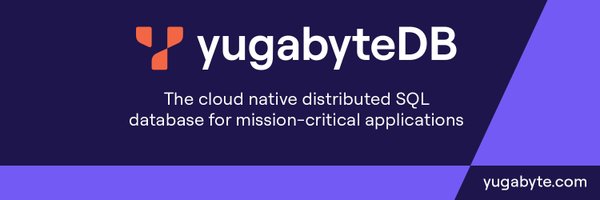Yugabyte CEO: The rise and sprawl of PostgreSQL
This is a guest post for Computer Weekly Open Source Insider written by Karthik Ranganathan, CEO and co-founder of Yugabyte.
Reminding us that every time you buy something online, stream a video, or book a flight, there’s a database working in the background to store and manage that data, Ranganathan points to the use of PostgreSQL as an enabler in this space.
Created in 1986, PostgreSQL has become a popular open source database for developers worldwide.
There’s been a rise and (in a positive sense of the word) a sprawl for PostgreSQL then.
Ranganathan writes as follows…
From humble beginnings, PostgreSQL has become the database of choice for developers and enterprises alike. It officially surpassed MySQL in popularity, according to Stack Overflow’s 2024 Developer Survey, with over 49% of developers reporting PostgreSQL as their preferred database technology.
As well as being the database of choice for developers, PostgreSQL is having a further moment in the limelight as major data and AI leaders make significant investments in PostgreSQL tools and capabilities.
In May 2025, Databricks acquired Neon, a startup focused on building a serverless, cloud-native PostgreSQL database. Snowflake then acquired Crunchy Data, a major player in PostgreSQL hosting and support.
Data framework dilemmas
PostgreSQL is rapidly becoming the default database for AI-powered applications. As AI agents emerge, traditional data frameworks struggle to meet the required speed and scale, while PostgreSQL handles this effectively. Major cloud providers are investing in PostgreSQL not just because it’s popular, but because it is foundational to the future of cloud data and AI infrastructure. These companies are building an AI-driven future and PostgreSQL’s ability to run transactional workloads natively makes it a critical part of that strategy.
So then, why PostgreSQL… and why now?
PostgreSQL has always been respected for its powerful feature set, reliability, cost-effectiveness and extensive ecosystem of tools. It’s compatible with a wide range of operating systems and programming languages and its open-source framework has fostered a global community that constantly contributes advancements to PostgreSQL.
However, the current momentum is about more than technical excellence; it’s about adapting to the ever-evolving data and AI application landscape.
As enterprise applications move to the cloud and require 24/7 availability, high scalability and global reach, the limitations of traditional databases become more apparent.
PostgreSQL, though powerful, wasn’t originally built for the demands of distributed cloud-native environments, but was designed for single-server environments. However, its popularity has made it the default API for modern transactional databases. As a result, many next-gen cloud-native databases have adopted the PostgreSQL protocol, embedding it deeply into the data ecosystem. This enables seamless transitions for developers without having to rewrite their applications.
Why is this so important in the context of the developing AI world? There are two main reasons:
1) Transparency & freedom from vendor lock-in:
With cloud costs rising and budgets tightening, many companies are looking for alternatives to existing, expensive proprietary databases. PostgreSQL is seen as an “enterprise-grade” database, but without the enterprise fees and vendor lock-in. This means organisations can move between providers or scale their data and AI initiatives without being tied to a single platform. In contrast, proprietary databases often limit adaptability and create high switching costs, which is something enterprises can no longer overlook given the volume and scale associated with modern data and AI applications.
2) Huge ecosystem & extension support:
PostgreSQL supports extensions that are critical to handling AI/ML workloads and large-scale analytics. PostGIS for geospatial queries, pgvector for AI/ML vector similarity search and Citus for horizontal scaling let PostgreSQL handle AI workloads, time-series data and large-scale analytics without leaving the database. As a result, PostgreSQL is powering the backend of many modern “AI-native” startups and becoming a foundational cog in the AI development machine.
What’s Next?
The rise of PostgreSQL is not just a fad, but a pivotal moment in the evolution of modern applications. It represents a foundational standardisation of how enterprises manage and interact with data at scale.
It’s no longer enough for a database to be fast and reliable; they must now also be open, flexible, cloud-native and developer-friendly. PostgreSQL checks all those boxes and more.
With support from the broader ecosystem, it is more than keeping pace with enterprise demands. PostgreSQL isn’t just a great database; it’s the database of the future, supported by community innovation, industry validation and a growing array of enterprise-grade advancements.
Whether you’re building the next global app or optimising legacy systems for the cloud, PostgreSQL is the trusted backbone of a digital-first world.




